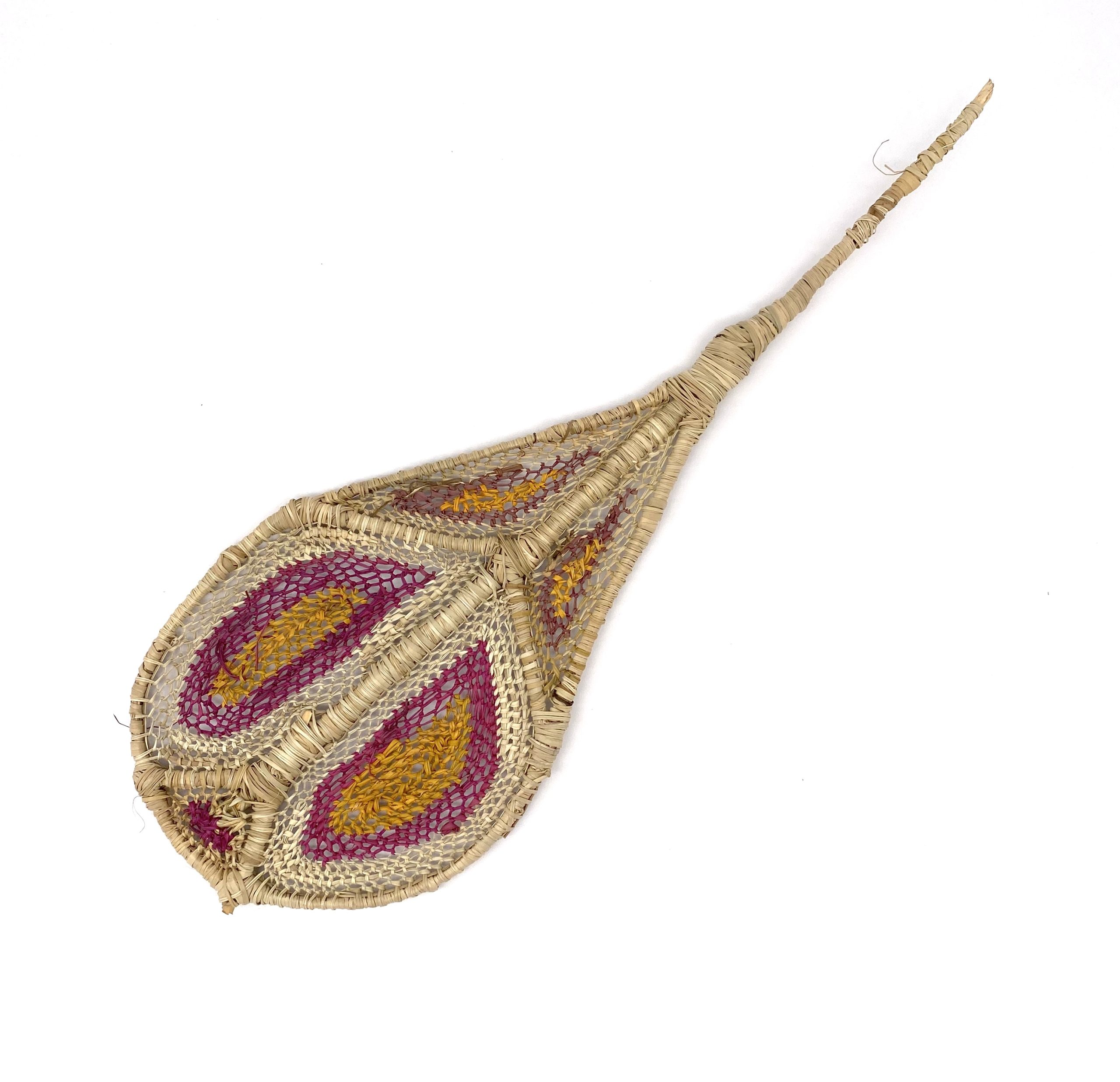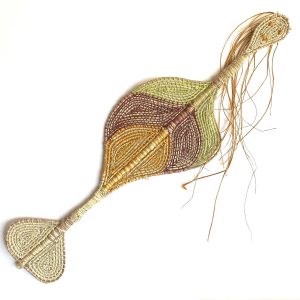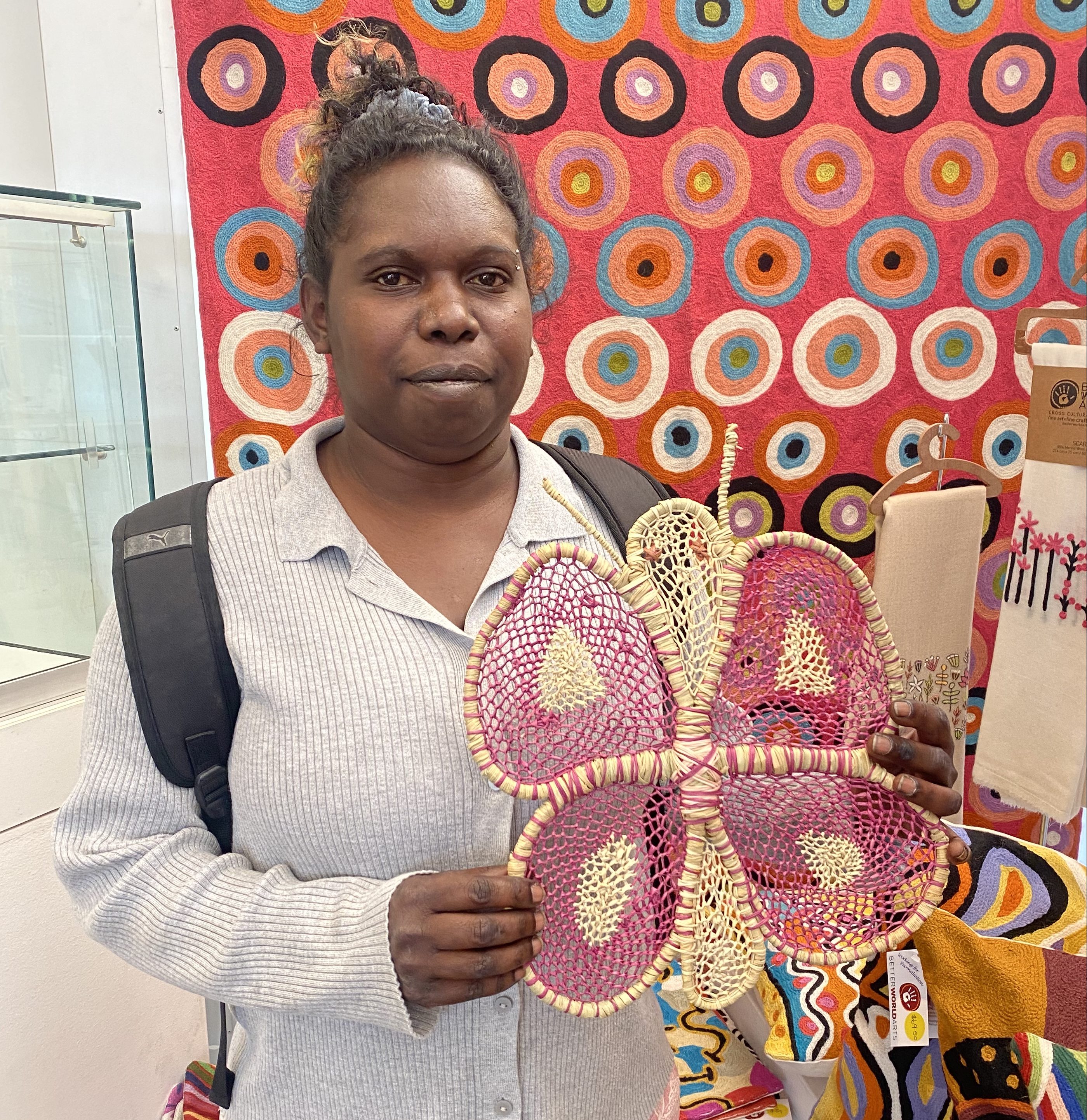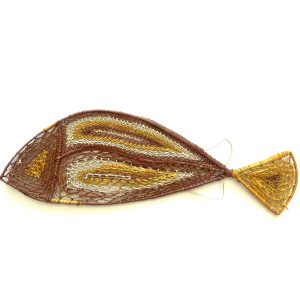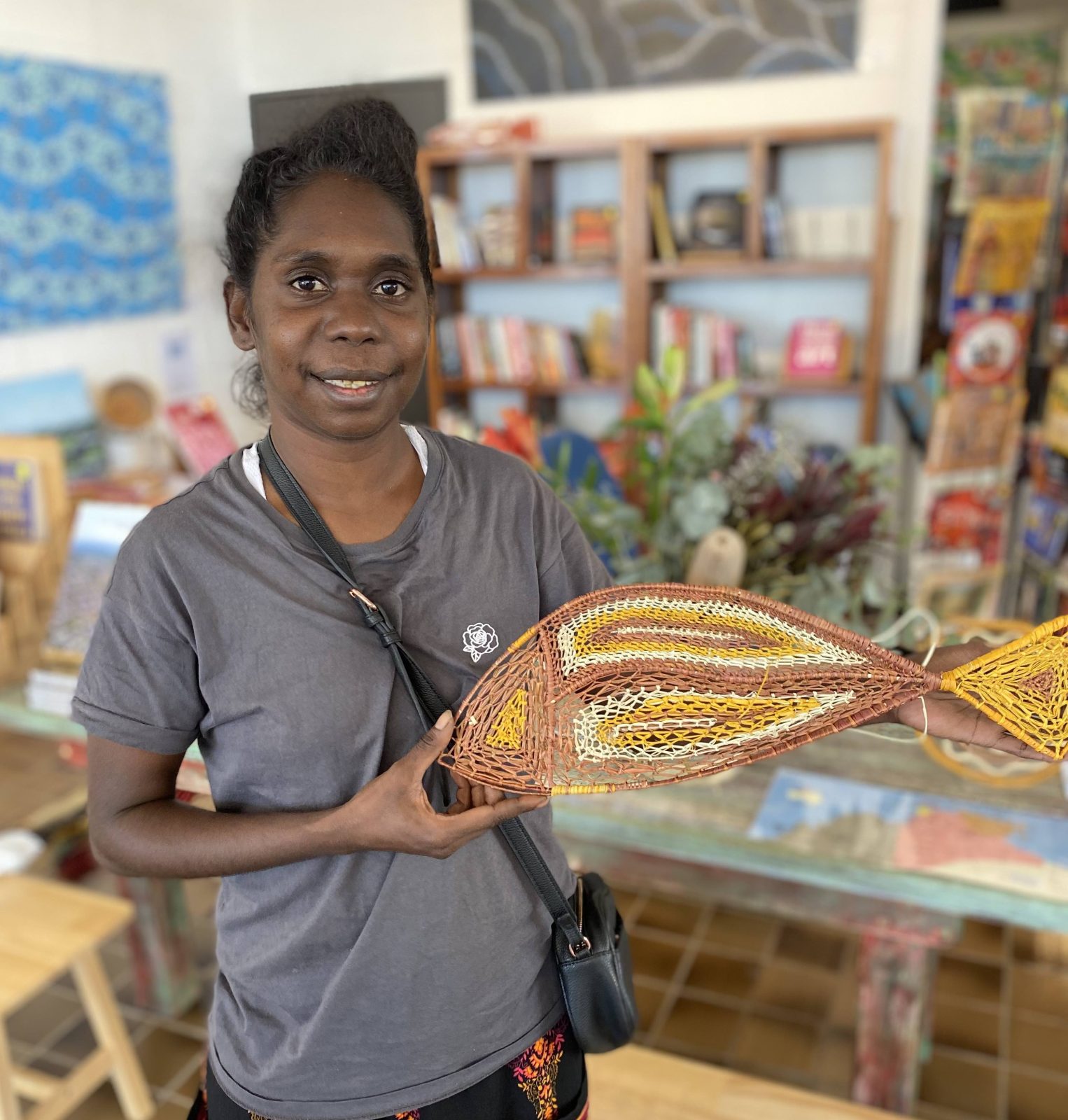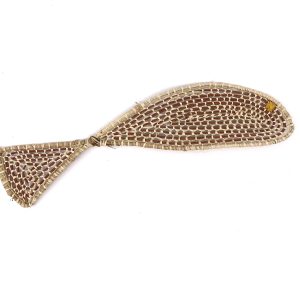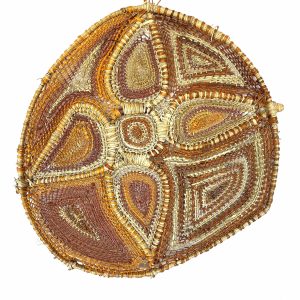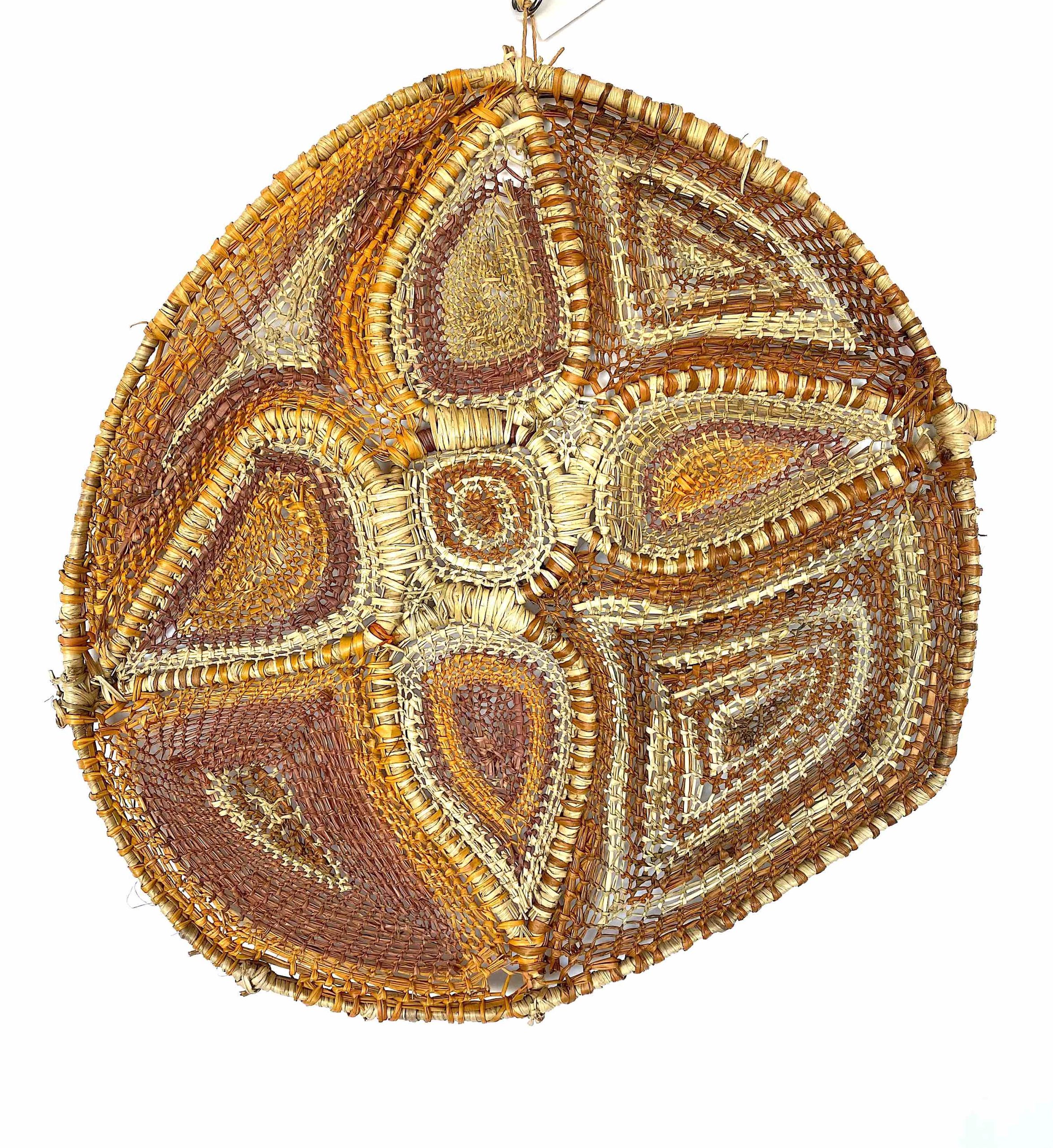Description
Dorothy is an exciting emerging fibre artist. She is sister to acclaimed artist and weaver Anniebell Marrngamarrnga who has been innovating in fibre arts for two decades.
Dorothy’s innovative designs are made from locally collected pandanus and bush dyes which she collects from around Ji-balbal Outstation, on her father’s country and Darwin.
Dorothy Bunibuni Past Group Exhibitions
2023: Shadow Spirit curated by Kimberley Moulton, RISING, Flinders Street Station, Melbourne VIC
2022: Northern Waters, Short St Gallery Broome
2021: Together we tell our stories 2021 : Indigenous Glass, Ceramics, Fibre + Sculpture, Sabbia Galley, Redferm, NSW
2021: Lineage, Delmar Gallery, Ashfield NSW
2020: Tarnanthi Art Fair, Lot Fourteen, Adelaide SA
Dorothy predominately uses gun-menama (pandanus spiralis) in her works. To prepare the pandanus the inner leaves of the plant are collected using a hook. Each V-shaped leaf is first split in half along its spine. After removing the sharp spines, the two surfaces of the leaf are then split away from other. After this preparation, the pandanus is boiled in a billycan with plant materials to dye the fibre. Like her contemporaries, she only uses natural dyes and achieves enormous variation. Common colours in her work include:– barra gu-jirra: the soft, white and fleshy end of the pandanus leaf imparts green to the fibre.
– mun-gumurduk/ gala (Pogonolobus reticulatus): a bright yellow root that is crushed and put in a billycan with the fibre and boiled. It creates yellow when boiled once and deep orange hues when boiled multiple times.
– ngalpur (Haemodorum brevicaule): a bright red root which yields a range of purply red to brown colours.
– Baluk: ashes of certain plants are added to the boiling billycan with the fibre and dye plants to alter the colour that is imparted to the fibre. The fruiting body of gulpiny (Banksia denanta) is burnt and the ashes added to other day plants to make the colour pink.
In 2003, Kuninjku artist Marina Murdilnga brought a revolutionary new form of pandanus weaving to Maningrida Arts & Culture: a flat yawkyawk made from knotted pandanus on a jungle-vine frame, painted with natural pigments. She next explored using dyed pandanus and feathers in this way. Murdilnga’s innovation inspired many other weavers, who are producing an array of beautifully resolved flat figurative works (stingray, butterflies, spiderwebs) and spiritual figures and Ancestral beings.
Reference Maningrida Arts & Culture
About Pandanus weaving
Contemporary Arnhem Land weavers are renowned for their beautifully executed Pandanus weavings and use of local dyes to create a wide palette of colours. Only women collect and process Pandanus. People often ask about how weavings are priced and we explain the various laborious and time consuming processes involved in creating a weaving.

